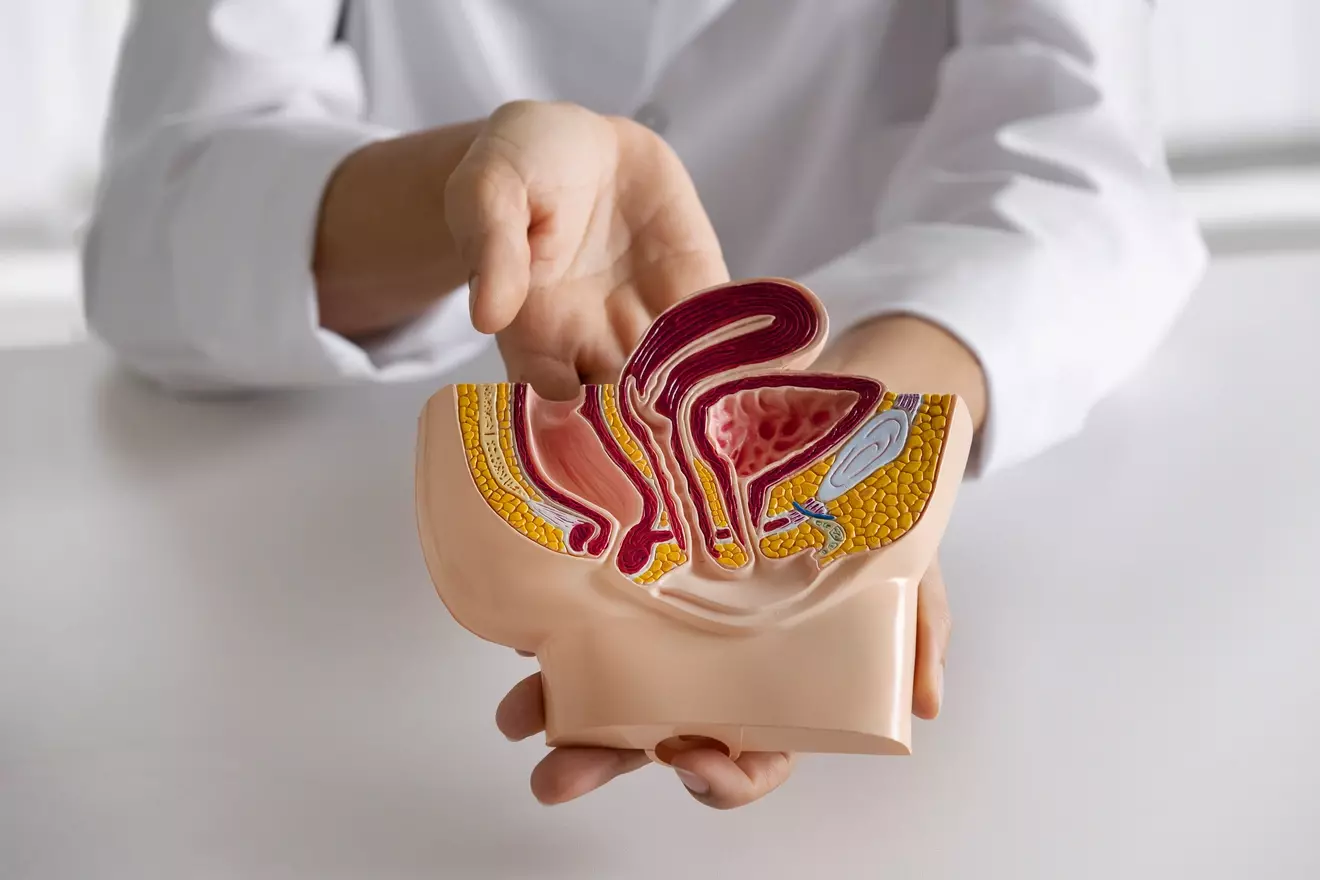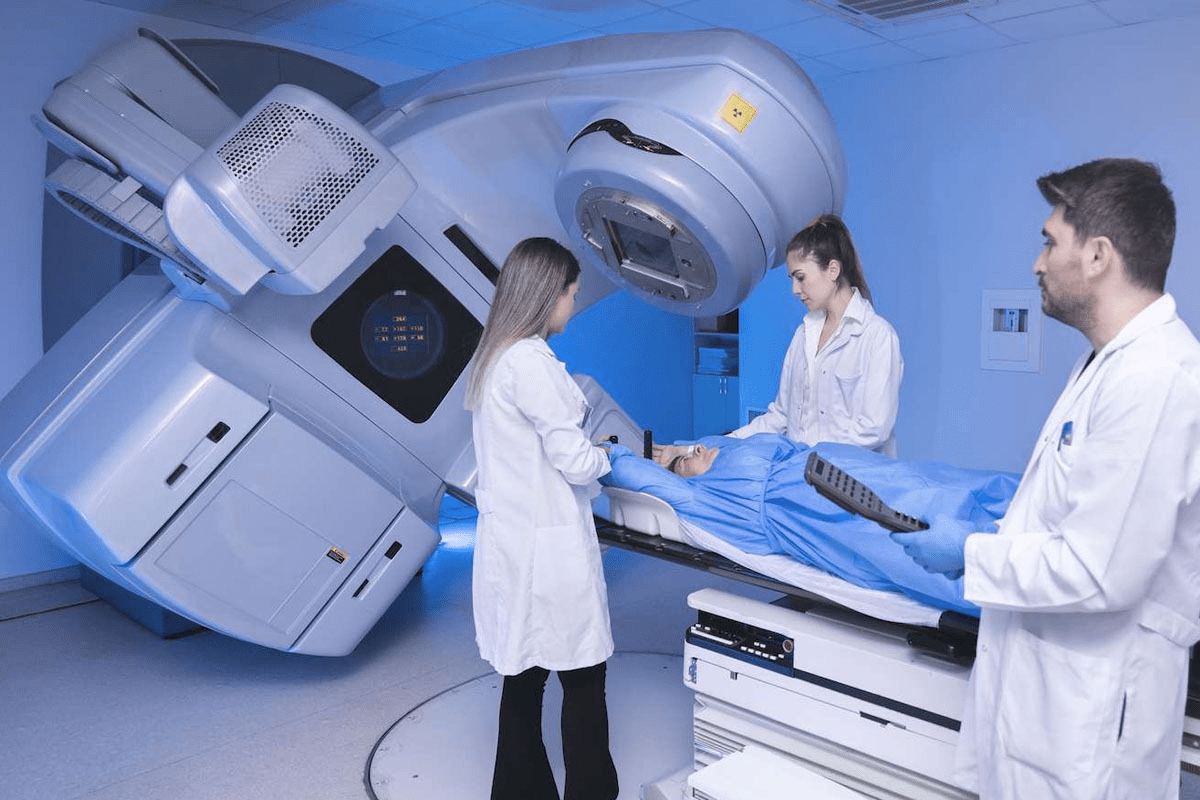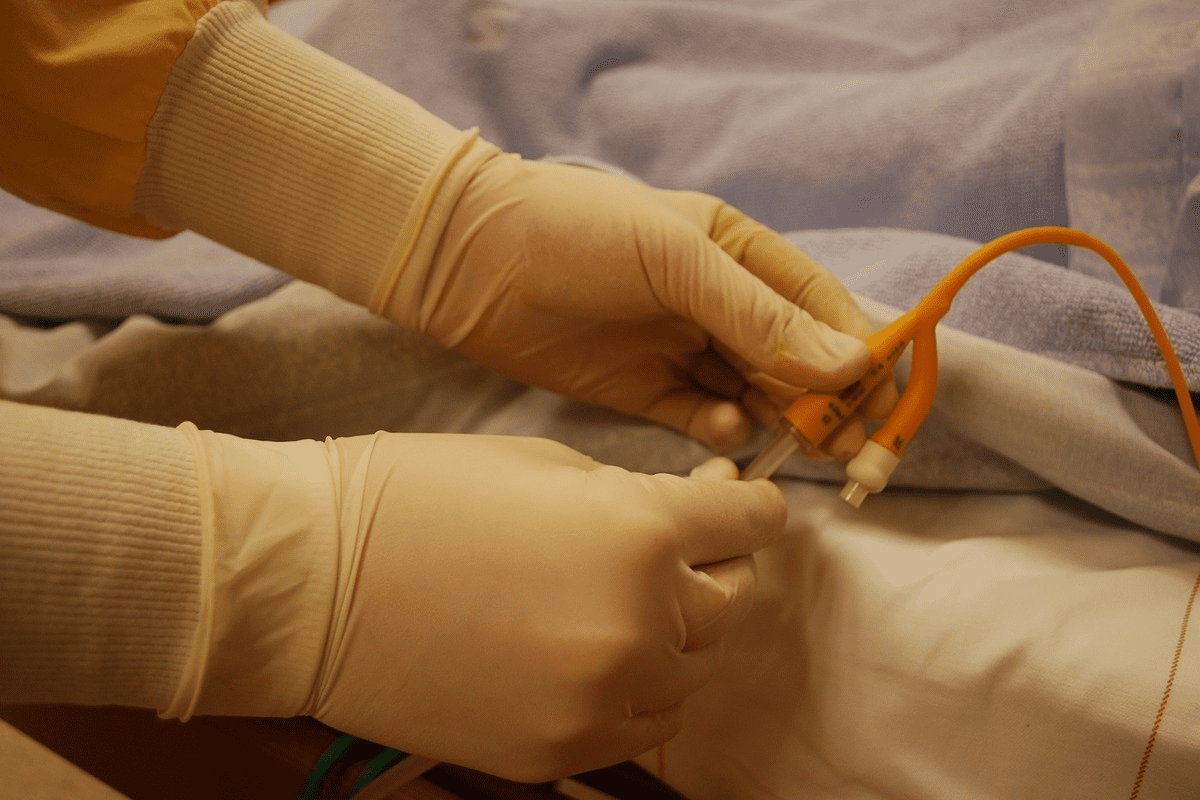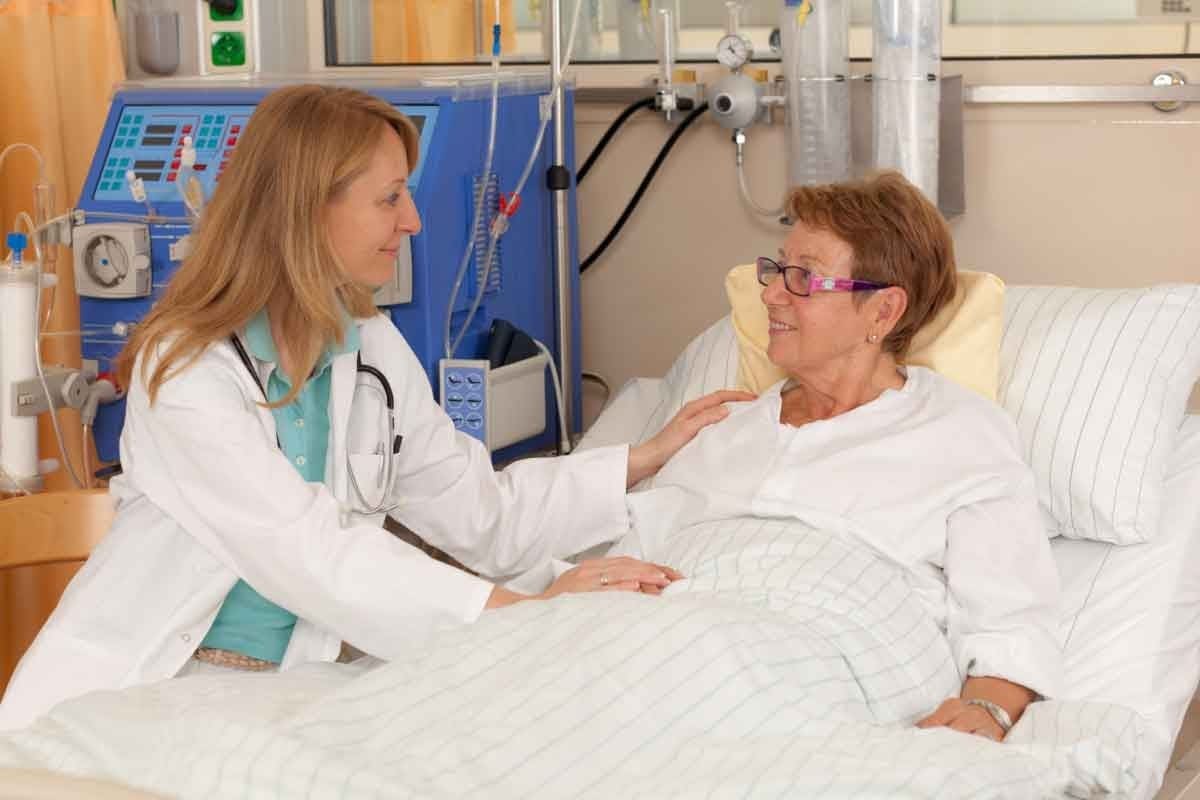Last Updated on November 26, 2025 by Bilal Hasdemir

At Liv Hospital, we know how hard it is to treat bladder cancer. We use a treatment called intravesical therapy. This is when medicine is put right into the bladder. Bacillus Calmette-Guérin (BCG) is a special kind of treatment. It’s a weakened bacterium that helps the body fight cancer.
BCG therapy works well for non-muscle invasive bladder cancer. It helps about 70% of patients get better. We also look at other treatments like chemotherapy wash. We want to give our patients the best and safest options.
Key Takeaways
- Intravesical therapy is a treatment where medication is directly instilled into the bladder.
- BCG is a weakened bacterium used to stimulate the immune system to fight cancer cells.
- Intravesical BCG therapy is highly effective against non-muscle invasive bladder cancer.
- Chemotherapy wash is an alternative treatment for bladder cancer.
- Liv Hospital provides advanced medical treatments for international patients.
Understanding Non-Muscle Invasive Bladder Cancer
It’s important to know about non-muscle invasive bladder cancer for good treatment. This type of bladder cancer hasn’t grown into the main muscle layer. We’ll look at the different types and stages of bladder cancer. We’ll also see how risk stratification helps choose treatments.
Types and Staging of Bladder Cancer
Bladder cancer is divided into types based on cell type and characteristics. The most common is urothelial carcinoma, also known as transitional cell carcinoma. Staging is key and shows how far the cancer has spread.
The stages range from Ta (non-invasive papillary carcinoma) to T1 (tumor invades subepithelial connective tissue). There are more invasive stages too. The staging process looks at tumor size, depth, and if it has spread.
Accurate staging is vital for choosing the right treatment. We use the TNM staging system. It looks at the tumor size and spread, lymph node involvement, and metastasis.
Risk Stratification and Treatment Selection
Risk stratification is key in managing non-muscle invasive bladder cancer. It groups patients based on tumor grade, stage, size, and number. It also considers patient history. This helps tailor treatments to each patient’s risk level.
Treatment options for NMIBC depend on the risk category. Intravesical treatment, where the agent is directly instilled into the bladder, is common. Bacillus Calmette-Guérin (BCG) therapy is a top choice for high-risk NMIBC. Knowing the patient’s risk helps choose the best treatment.
BCG in Bladder Carcinoma: Mechanism of Action
Understanding BCG’s role in bladder carcinoma is key to effective treatment. BCG, or Bacillus Calmette-Guérin, is a form of immunotherapy. It’s widely used to treat non-muscle invasive bladder cancer (NMIBC).
What Is Bacillus Calmette-Guérin
Bacillus Calmette-Guérin (BCG) is a live, weakened strain of Mycobacterium bovis. It’s used to vaccinate against tuberculosis. In bladder cancer treatment, BCG is put directly into the bladder through a process called intravesical instillation.
This treatment stimulates the immune system to fight cancer cells in the bladder. The use of BCG in bladder cancer was first noticed when patients with bladder cancer who were treated with BCG for tuberculosis showed a reduction in their cancer.
How BCG Stimulates Immune Response Against Cancer Cells
The mechanism of action of BCG involves a strong immune response. When BCG is put into the bladder, it causes an inflammatory reaction. This attracts immune cells to the bladder wall.
The process involves several key steps:
- The BCG bacteria adhere to the bladder wall, initiating an immune response.
- Immune cells, including macrophages and T-cells, are activated to fight the perceived infection.
- These immune cells release various cytokines and chemokines that enhance the immune response.
- The immune response is directed not only against the BCG bacteria but also against the cancer cells present in the bladder.
Historical Development and Approval
BCG has a long history in medicine, dating back to its development as a tuberculosis vaccine in the early 20th century. Its use in bladder cancer treatment began by accident, as mentioned earlier. It was further developed and approved for use in the United States in the 1980s.
The approval was based on significant clinical evidence showing BCG’s effectiveness in reducing recurrence and progression of NMIBC. Today, BCG remains a standard treatment for high-risk NMIBC. It’s considered a critical component of bladder cancer management.
The BCG Treatment Protocol
BCG therapy has a structured plan with two main parts: induction and maintenance. This plan is key to managing non-muscle invasive bladder cancer well.
Induction Therapy: Six-Week Schedule
The first part, induction, involves giving BCG once a week for six weeks. This intense start aims to boost the immune system to fight cancer.
During this time, doctors watch for any bad reactions or side effects. It’s important to check how well the patient can handle BCG and adjust the treatment if needed.
Maintenance Therapy Guidelines
After the first phase, maintenance therapy starts to keep the immune system on guard. This treatment is given every 3 to 6 months for up to 3 years.
The exact schedule for maintenance can change based on the patient’s risk level and how they react to the first treatment. Regular check-ups are key to decide if more maintenance is needed.
For more details on BCG’s effect on bladder cancer coming back, check out studies on markers that forecast bladder cancer recurrence after BCG.
Patient Selection Criteria
Not every bladder cancer patient is right for BCG therapy. The choice to use BCG depends on the cancer’s stage and grade, if there’s carcinoma in situ, and the patient’s health.
Those with high-risk non-muscle invasive bladder cancer are often the best fit for BCG. But, people with certain health issues or weak immune systems might not qualify.
| Treatment Phase | Frequency | Duration |
|---|---|---|
| Induction Therapy | Weekly | 6 weeks |
| Maintenance Therapy | Every 3-6 months | Up to 3 years |
The BCG Instillation Procedure Step-by-Step
Learning about the BCG instillation procedure can ease patient worries. It’s a series of steps to make sure BCG therapy gets into the bladder right.
Pre-Procedure Preparation
Before starting, patients are told to follow certain steps. This helps avoid side effects and makes the treatment work better. We suggest that patients:
- Empty their bladder completely before the procedure.
- Avoid drinking fluids for a couple of hours before. This helps them not need to urinate during the treatment.
- Tell their healthcare provider about any urinary tract infections or discomfort.
Catheterization and Administration Process
The BCG instillation procedure uses catheterization to put the BCG solution in the bladder. Our medical team makes sure the catheterization is as comfortable as it can be. The steps are:
- A sterile catheter is put into the bladder through the urethra.
- The BCG solution is then put into the bladder through the catheter.
- The catheter is taken out, and patients are asked to keep the solution in for about 2 hours.
Post-Instillation Instructions
After the procedure, patients are given specific instructions to follow. We tell patients to:
- Stay as they are for a short time after to prevent leakage.
- Avoid urinating for at least 2 hours to let the BCG solution work on the bladder lining.
- Drink lots of fluids after the retention period to help flush out the bladder.
One patient said, “Following the post-instillation instructions carefully made a big difference in my treatment experience.”
“The key to successful BCG therapy lies not just in the administration of the treatment but also in the careful preparation and post-procedure care,”
Effectiveness of BCG Therapy
BCG therapy is a key treatment for non-muscle invasive bladder cancer (NMIBC). It helps lower the chance of cancer coming back and spreading. We’ll look at how well BCG therapy works for different types of cancer and its role in treating NMIBC.
Success Rates for Different Risk Categories
The success of BCG therapy depends on the cancer’s grade and stage, and how well the patient responds. Research shows BCG therapy is very good at cutting down the risk of cancer coming back and getting worse in NMIBC patients.
| Risk Category | Success Rate | Recurrence Rate |
|---|---|---|
| Low Risk | 80-90% | 10-20% |
| Intermediate Risk | 60-80% | 20-40% |
| High Risk | 40-60% | 40-60% |
Recurrence and Progression Prevention
BCG therapy not only treats tumors but also stops new ones from forming. It boosts the immune system to kill off any leftover cancer cells. This makes it less likely for cancer to come back.
Key benefits of BCG therapy include:
- Reduced risk of recurrence
- Prevention of progression to muscle-invasive bladder cancer
- Improved bladder preservation rates
Factors Affecting Treatment Response
Many things can affect how well BCG therapy works. These include the cancer’s grade and stage, any health problems the patient has, and genetic mutations. Knowing these factors helps make treatment better.
By customizing BCG therapy for each patient and watching how they respond, we can make it work best for managing NMIBC.
BCG Side Effects and Management
BCG therapy is a key treatment for non-muscle invasive bladder cancer. It can cause side effects, like local bladder symptoms and systemic effects. These side effects need careful management.
Local Bladder Symptoms
Local bladder symptoms are common side effects of BCG therapy. These symptoms include:
- Dysuria (painful urination)
- Frequency and urgency
- Hematuria (blood in the urine)
These symptoms are usually mild to moderate. They can be managed with hydration and pain relief medication.
Systemic Side Effects
Some patients may experience systemic side effects from BCG therapy. Common ones include:
- Flu-like symptoms (fever, chills, fatigue)
- Malaise
- Joint pain
These symptoms are usually self-limiting. But, they may need medical attention if they don’t get better or get worse.
BCG Infection and Serious Complications
BCG therapy can sometimes lead to serious complications, like BCG infection. This is a potentially life-threatening condition that needs immediate medical attention.
Symptoms of BCG infection include:
- High fever
- Severe fatigue
- Weight loss
Risk factors for BCG infection include traumatic catheterization and immunosuppression.
Strategies to Minimize Adverse Reactions
To reduce the risk of adverse reactions, several strategies can be used:
- Reducing the dose of BCG
- Administering anti-inflammatory medications
- Delaying BCG instillation after TURBT (Transurethral Resection of Bladder Tumor)
Patient education and monitoring are also key in managing side effects effectively.
Understanding BCG therapy’s side effects and managing them can improve patient care and treatment outcomes.
Intravesical Chemotherapy: The Chemo Wash Alternative
Chemo wash, or intravesical chemotherapy, is a new way to fight bladder cancer. It puts chemotherapy drugs right into the bladder. This method targets cancer cells in the bladder lining.
What Is a Bladder Cancer Chemotherapy Wash
A bladder cancer chemotherapy wash is when drugs are put into the bladder to kill cancer cells. It’s great for treating non-muscle invasive bladder cancer. This way, the drugs hit the cancer spot directly, reducing side effects.
Common Agents: Mitomycin C, Gemcitabine, and Others
Mitomycin C and Gemcitabine are top choices for this treatment. Mitomycin C stops cancer cells from making more by messing with their DNA. Gemcitabine works by stopping DNA synthesis, which stops cancer cells from growing.
Other drugs like epirubicin and doxorubicin are also used. They work in different ways to fight cancer. The right drug depends on the cancer’s type, stage, and the patient’s health.
Mechanism of Action vs. BCG
BCG and intravesical chemotherapy treat non-muscle invasive bladder cancer but in different ways. BCG boosts the immune system to fight cancer. Intravesical chemotherapy, on the other hand, kills cancer cells directly with drugs.
This difference is key in choosing the best treatment for each patient. It depends on the cancer’s details and the patient’s health.
Chemo Wash Administration Procedure
The chemo wash treatment is key in fighting bladder cancer. It involves putting chemotherapy drugs right into the bladder. This step is often done right after surgery to stop cancer from coming back.
Immediate Post-Operative Single Instillation
One way to do chemo wash is with a single dose right after surgery. This means putting a single dose of chemotherapy into the bladder soon after removing tumors. The aim is to kill any cancer cells left behind.
This early treatment can greatly lower the chance of cancer coming back. The drug Mitomycin C is often used because it targets bladder cancer cells well.
Course Treatment Protocols
For some, a single dose might not be enough. They might need a series of treatments. How many and how long depends on the patient’s situation and how they react to the treatment.
We make our treatment plans flexible. This lets us change how often and for how long we do the treatments based on what the patient can handle.
Patient Experience During Instillation
Patients might feel some discomfort during the treatment. This could be a bit of pressure or mild pain in the bladder area. But these feelings usually don’t last long and can be managed.
We really care about how patients feel during treatment. We make sure they know what to expect and offer support every step of the way.
Knowing about the chemo wash process helps patients get ready for treatment. Our team is dedicated to giving the best care and support during the whole treatment.
Comparing BCG and Chemo Wash Treatments
It’s important for patients and doctors to know the differences between BCG and chemo wash treatments. Both are used for bladder cancer that hasn’t spread deeply. But they work in different ways and have different side effects.
Efficacy Comparison by Risk Category
BCG is better for those at high risk of bladder cancer coming back. It boosts the immune system to fight cancer cells. Chemo wash, with drugs like Mitomycin C, is used for lower-risk patients or when BCG isn’t an option.
Efficacy varies by risk category: For low-risk patients, chemo wash might be enough. But for high-risk patients, BCG is usually the best choice. It’s better at stopping tumors from coming back and growing.
Side Effect Profiles
BCG and chemo wash both have side effects, but they’re different. BCG can cause bladder problems and flu-like symptoms. Chemo wash might irritate the bladder and, rarely, cause other problems.
Managing side effects is key to keeping patients happy and healthy. For BCG, doctors can help with symptoms. Chemo wash side effects might need treatment changes or stopping the treatment.
Cost and Accessibility Factors
The cost and how easy it is to get BCG and chemo wash vary a lot. BCG is often pricier because of the vaccine and needing to do it many times.
- What insurance covers and how much you pay out of pocket can affect your choice.
- Where you live and access to special care centers also play a role.
Treatment Selection Considerations
Choosing between BCG and chemo wash depends on several things. We look at the patient’s risk, health, and what they prefer. We work with patients to find the best treatment for them.
Personalized medicine approach: We consider many factors like how well it works, side effects, and cost. Our goal is to find the best treatment that’s also easy to handle for each patient.
When Standard Treatments Fail: Second-Line Therapies
When first treatments don’t work, we look into second-line therapies for bladder cancer. For those who don’t get better with BCG or chemo, we need other ways to manage the disease.
BCG-Unresponsive Disease Management
BCG-unresponsive disease is tough to handle. The cancer doesn’t react to BCG. We look at other treatments and clinical trials to help.
Key strategies include:
- Switching to alternative intravesical agents
- Using device-assisted therapies to enhance treatment efficacy
- Participating in clinical trials for emerging treatments
Alternative Intravesical Treatments
For those who don’t get better with BCG, there’s hope. We use:
- Gemcitabine: A chemotherapy drug for bladder cancer
- Mitomycin C: Another chemotherapy option when BCG fails
- Other new treatments being tested in trials
Device-Assisted Therapies
Device-assisted therapies help get treatments into the bladder better. Examples are:
| Therapy | Description | Benefits |
|---|---|---|
| Radiofrequency-induced thermochemotherapy | Combines heat with chemotherapy for better results | More effective against cancer cells |
| Electromotive drug administration | Uses electrical currents to improve drug delivery | Drugs get into the bladder better |
Clinical Trials and Emerging Options
Clinical trials are key in finding new bladder cancer treatments. We’re looking at:
- Immunotherapies, like checkpoint inhibitors
- Targeted therapies for specific cancer markers
- Combination therapies mixing different treatments
Joining clinical trials can give patients access to new, not-yet-widely-used treatments.
Conclusion: Navigating Treatment Decisions
Choosing the right treatment for bladder cancer can be tough. Patients need to look at all options, like intravesical therapy, to find the best one.
It’s important for patients to talk to their doctors about these treatments. This way, they can make choices that fit their needs and situation.
In this article, we’ve talked about BCG therapy and other treatments. Knowing about these options helps patients make better decisions about their care.
Being informed and involved in your care can lead to better results. We suggest patients ask their doctors questions. This ensures they get the best treatment for their bladder cancer.
What is BCG treatment for bladder cancer?
BCG (Bacillus Calmette-Guérin) is a treatment for bladder cancer. It uses a weakened tuberculosis bacterium to boost the immune system. This helps fight cancer cells in the bladder.
How is BCG administered for bladder cancer?
BCG is put directly into the bladder through a catheter. This is called intravesical instillation. The treatment starts with an initial phase and then maintenance therapy.
What is a chemo wash for bladder cancer?
A chemo wash, or intravesical chemotherapy, is a treatment for bladder cancer. It involves putting chemotherapy drugs into the bladder to kill cancer cells. It’s used alongside or instead of BCG therapy.
What are the common chemotherapy agents used for bladder cancer chemo wash?
For intravesical chemotherapy, drugs like Mitomycin C and Gemcitabine are used. These drugs kill cancer cells in the bladder.
How does BCG therapy compare to intravesical chemotherapy?
BCG and intravesical chemotherapy work differently. BCG boosts the immune system, while chemotherapy kills cancer cells directly. The choice depends on the patient’s situation and cancer type.
What are the side effects of BCG therapy?
BCG therapy can cause bladder symptoms like frequent urination and discomfort. It can also lead to flu-like symptoms. Rarely, it can cause serious infections.
How are side effects of BCG therapy managed?
Managing BCG side effects includes treating symptoms and adjusting treatment plans. Pre-medication and post-procedure care can also help.
What happens if BCG treatment fails?
If BCG treatment fails, other treatments like intravesical chemotherapy or device-assisted therapies may be considered. Clinical trials for new treatments are also an option.
How is intravesical chemotherapy administered?
Intravesical chemotherapy is given directly into the bladder through a catheter. It can be a single dose after surgery or part of a treatment plan.
What are the benefits of intravesical chemotherapy compared to BCG?
Intravesical chemotherapy may have different side effects and is better for some patients. It’s a good option for those who can’t tolerate BCG or have BCG-resistant disease.
How do I choose between BCG and chemo wash for bladder cancer treatment?
Choosing between BCG and chemo wash depends on your cancer stage, health, and preferences. It’s important to talk to your healthcare provider to make the best choice.
References
- Moffitt Cancer Center. BCG Therapy for Bladder Cancer. https://www.moffitt.org/cancers/bladder-cancer/treatment/bcg-therapy/
- Macmillan Cancer Support. BCG treatment for bladder cancer. https://www.macmillan.org.uk/cancer-information-and-support/treatments-and-drugs/bcg-treatment-for-bladder-cancer
- Cancer Treatment Centers of America. BCG Treatment for Bladder Cancer. https://www.cancercenter.com/cancer-types/bladder-cancer/treatments/bcg-treatment
- MSKCC (Memorial Sloan Kettering Cancer Center). Bacillus Calmette‑Guerin Therapy in Bladder Cancer. https://www.mskcc.org/cancer-care/types/bladder/treatment/bacillus-calmette-guerin-therapy
- Bladder Cancer Advocacy Network (BCAN). BCG Treatment for Bladder Cancer. https://bcan.org/bcg-treatment-for-bladder-cancer/








